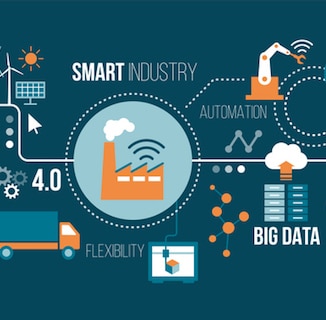The architectural model based on microservices has emerged as the preferred method to develop software applications, particularly for those delivered via the Cloud. Monolithic architectural models that have historically dominated application development (including MES) for the last 30-40 years are reaching the end of their useful life for a variety of reasons. Microservices appear poised to deliver the next round of performance improvement.
Much of the drive towards microservices by developers like iBase-t has been due to the move to the Cloud. Every dominant Cloud provider like Microsoft Azure and Amazon’s AWS are themselves built upon a services model. Therefore, to take full advantage of this deployment model, product re-architecting using microservices just makes sense.
For iBase-t, like other developers, microservices facilitate faster time-to-market, allow for more scalable systems, and enable more frequent, faster product updates. This makes it much easier to deliver and maintain solutions much like apps are delivered to your smartphone. End users get just the functionality they want while being assured that bug fixes and product enhancements are rolled out in a transparent and timely manner.
But the benefits of microservices go far beyond basic delivery and support improvements.
Microservices Have Many Characteristics
This architecture is, in some respects, the next evolutionary step beyond object computing. As mentioned above, it represents a far different approach from that of monolithic applications, which has been used ever since software first penetrated the shop floor.
The following key characteristics illustrate the depth and breadth of potential improvements that can be achieved by embracing this alternative architectural strategy:
- Functionality is delivered as small, reusable services
- Independent deployment
- Utilization of lightweight communication mechanisms
- A minimal requirement for oversight or central control
- Supports multiple programming languages
- Accommodates various data storage and retrieval strategies
The question you might now ask is, “How do these developer benefits translate to better value for me, the end user?”
Microservices Provide “What You Need, When You Need It”
To start, by moving to a microservices architecture, iBase-t can deliver product enhancements and bug fixes in a much timelier fashion. This is because microservices are inherently well suited to agile development and deployment.
For end-users deploying in the Cloud and on a SaaS basis, this means new features and fixes can be rolled out transparently, just like apps on your smartphone often update themselves without you even knowing (if you authorize that approach).
Microservices can also allow for better deployments since the services are built around business processes. So, a process-by-process implementation can be accommodated instead of a massive cross-business rollout, typical in older monolithic applications. This lets you untangle the spaghetti-like mess that characterizes many typical legacy deployments that have been customized with every upgrade over time. And, new implementations can avoid this mess from the start by taking advantage of using a Lego-like building block approach, resulting in much more supportable deployment.
Learn more about this topic by watching this webinar recording, “Why Today is a Great Time to Retire a Legacy MES.”
Not only can a microservices architecture simplify the addition of future product enhancements, but it can also ease the ability to scale an MES implementation. Whether in the Cloud or on-premises, as demand grows for additional functionalities, new processes, or greater process capacity, it is easy to add or modify services to achieve each of these objectives. With microservices, you deploy just what you need, just when you need it.
Application Agility Translates to Operational Flexibility
As companies ramp up their digital transformation programs while seeking to avoid Technical Debt, a microservices architecture allows for a much more phased approach to application replacement. Instead of a rip-and-replace, massive capital project, it is now possible to deploy a phased, continuous approach.
This allows businesses to be more agile during their initial adoption of an iBase-t solution (or any other microservices-based offering). Further, as business needs change, particularly as is the case during today’s COVID-19 era, management teams can react with greater speed and performance by deploying new services on a just-in-time basis.





